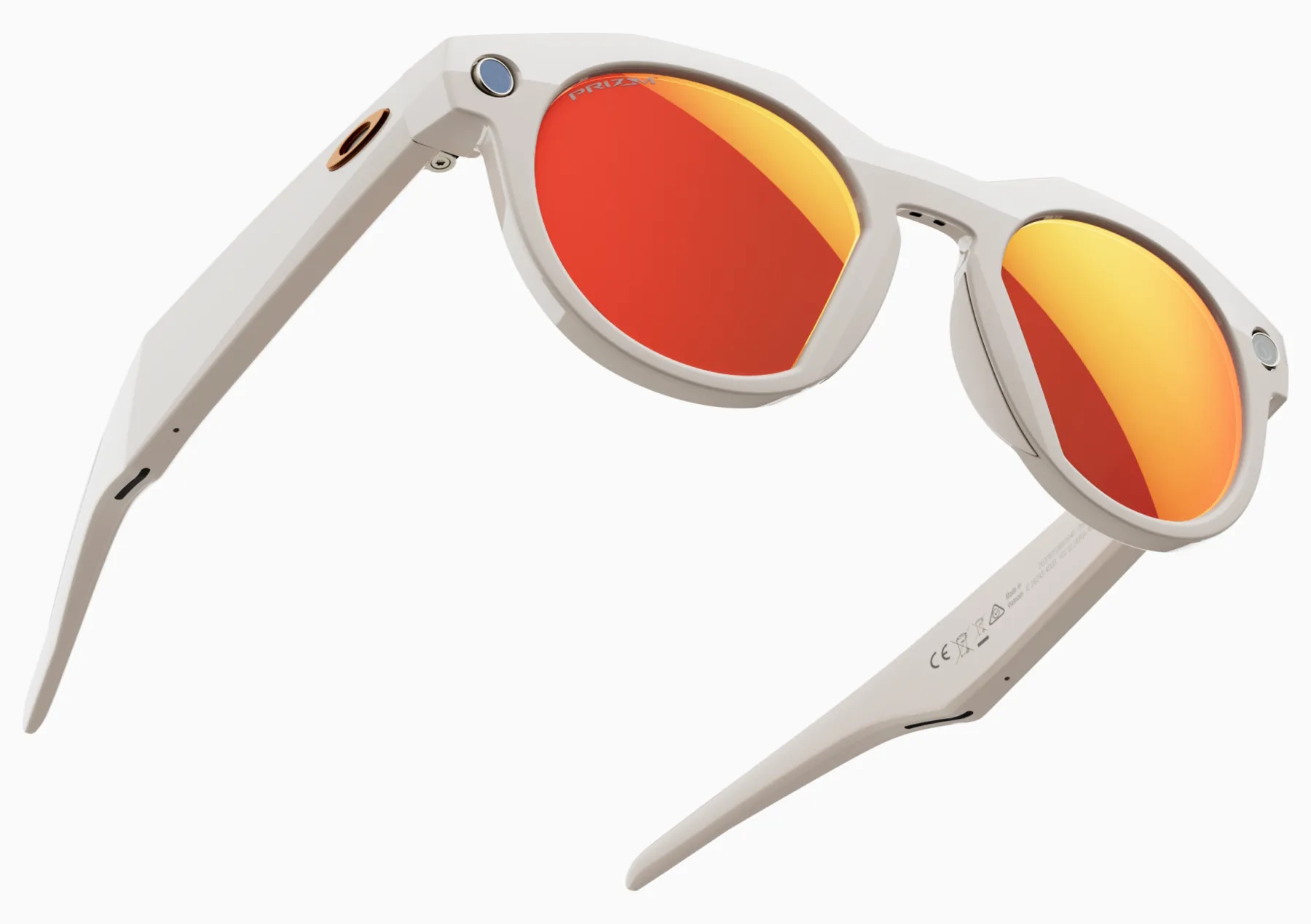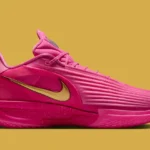Meta Platforms Inc. is taking a significant step forward with its surprisingly successful smart glasses initiative. Building on the unexpected popularity of its recent models, the tech giant today, Friday, June 20, 2025, officially rolled out new smart glasses models in collaboration with Oakley.
This strategic move represents Meta’s first expansion beyond its original partnership with Ray-Ban for its display-free smart eyewear. The new Oakley-branded glasses are specifically aimed at athletes and individuals with active lifestyles, incorporating substantial enhancements such as improved video recording capabilities and increased durability.
The launch underscores Meta’s ambition to carve out a significant presence in the wearable technology market, particularly in the burgeoning field of artificial intelligence integration within everyday devices. These new glasses are not just fashion accessories; they are designed as functional tools that seamlessly blend technology with user experience.
Like their successful predecessors, the Oakley versions retain core functionalities: they can make and receive phone calls, play music, capture high-quality pictures and video, and leverage Meta’s advanced artificial intelligence to answer queries about the surrounding environment. This latest offering signifies Meta’s commitment to iterating on its hardware designs and targeting specific user demographics to cement its position in the competitive AI hardware race.
Enhanced Features: Powering the New Oakley Models
The latest Oakley smart glasses boast significant upgrades in core functionalities, addressing user feedback and targeting a more demanding demographic.
Doubled Battery Life and High-Resolution Video
The newly launched Oakley smart glasses arrive with several critical enhancements designed to improve user experience and cater to more demanding use cases. Starting at a competitive price of $399, with a premium limited edition model featuring gold-colored accents available for $499, these glasses pack substantial upgrades under their stylish exterior.
A key improvement addresses one of the primary concerns of the previous Ray-Ban versions: battery life. The new Oakley models offer approximately double the battery life on a single charge. This extended endurance allows users to engage with the glasses’ features for much longer periods without interruption, crucial for athletes and active individuals who might be away from charging points for extended durations.
Furthermore, the video recording capabilities have received a significant boost. The new models are now capable of video-recording at an impressive 3K resolution. This higher resolution translates to significantly clearer, more detailed, and vibrant footage, allowing users to capture their experiences with professional-grade quality directly from their point of view.
This upgrade is particularly appealing for content creators, adventurers, and anyone wishing to document their activities with superior visual fidelity. Complementing these advancements is the addition of enhanced water resistance, making the glasses more robust and suitable for various outdoor activities, including those near water or in light rain, without fear of damage. These combined features underscore Meta’s focus on creating a more versatile and durable wearable device.
Designed for Performance Use Cases
The strategic pivot towards the Oakley brand and the integration of these enhanced features are a direct response to observed user behavior with the previous Ray-Ban models. Alex Himel, Meta’s Vice President in charge of wearables, highlighted this shift in an interview:
“We are increasingly seeing performance use cases with the Ray-Bans like people wearing them on roller coasters, cycling and being around water, so we’re trying to lean into that.” This insight from existing user data directly informed the development of the Oakley line, which is synonymous with high-performance eyewear for sports and outdoor activities.
The improved battery life directly supports extended use during long runs, bike rides, or other athletic endeavors. The 3K video recording empowers users to capture high-quality footage of their adventures, from extreme sports to scenic hikes, all from a first-person perspective without needing to hold a separate camera. The enhanced water resistance ensures the glasses can withstand sweat, splashes, and light rain, making them durable companions for any active pursuit.
By specifically designing the Oakley models to meet the demands of performance-oriented users, Meta aims to tap into a new market segment that values durability, extended functionality, and high-quality media capture during their activities. This targeted approach is a calculated move to expand the appeal and utility of their smart glasses.
Evolution of Meta’s Smart Glasses Strategy
Meta’s journey into smart glasses has seen both setbacks and surprising successes, shaping its multi-year hardware roadmap.
From Flop to Unexpected Success
Meta’s venture into smart glasses has been a rollercoaster of challenges and unexpected triumphs. The company’s initial foray into the market with the Ray-Ban Stories in 2021 was met with a lukewarm reception and ultimately flopped. This first generation struggled to find a strong market fit, leading many to question Meta’s hardware ambitions. However, the company demonstrated resilience and a willingness to iterate, learning crucial lessons from its initial misstep.
The follow-up version launched in 2023 proved to be a “massive success,” catching even Meta itself by surprise. Alex Himel candidly admitted, “It was crazy. Popularity caught us by surprise a bit.” This unexpected triumph gave the social networking giant a “real potential hardware stronghold in the artificial intelligence race.” The success of the 2023 Ray-Ban models, which refined the concept of display-less smart glasses with improved audio, camera, and AI capabilities, validated Meta’s vision.
Himel revealed the internal skepticism prior to this success, stating the Ray-Bans “were going to be the last display-less pair of glasses. We said we’ll take two swings at it, and if it doesn’t work we’ll go all-in on augmented reality.” The turnaround was so significant that it not only secured the future of display-less smart glasses for Meta but also shifted their long-term hardware strategy.
A Multi-Year Roadmap for Display-Less Glasses
The surprising success of the 2023 Ray-Ban smart glasses has fundamentally reshaped Meta’s long-term hardware strategy, extending far beyond the newly launched Oakley model. Contrary to earlier internal plans to abandon the “display-less” category if the second attempt failed, the company now has a robust “multi-year road map for the display-less category.” This commitment signals a sustained investment in this form factor, recognizing its market appeal and potential for further innovation.
As part of this extended roadmap, Meta is already planning a follow-up pair of Oakley glasses based on the Sphera design for later this year, according to informed sources. This forthcoming model will be specifically aimed at cyclists and will feature a centered camera, a notable design change from the current Oakley model and the Ray-Ban version, both of which have their cameras positioned in the upper corner.
The centered camera is likely designed to capture a more balanced and immersive field of view, particularly beneficial for dynamic activities like cycling. This continuous innovation and brand expansion within the display-less category demonstrate Meta’s confidence in the product line and its potential to capture diverse user segments, from fashion-conscious consumers to dedicated athletes.
Meta’s Broader AI Hardware Vision
The display-free smart glasses are just one piece of Meta’s ambitious, multi-faceted strategy to integrate AI into various hardware platforms, leading towards true augmented reality.
High-End Display Glasses and True AR
The display-free smart glasses, including the new Oakley models, represent just one component of Meta’s overarching AI hardware strategy. The company is pursuing a multi-tiered approach to integrate artificial intelligence into various wearable form factors, with increasingly sophisticated capabilities.
Beyond the current generation of camera-and-audio-focused glasses, Meta is planning to introduce higher-end smart glasses with a built-in display later this year, as previously reported by Bloomberg News. These more advanced models are expected to feature a small, integrated display that will allow users to view notifications directly and also serve as a camera viewfinder, providing a more interactive and visual experience than the current display-less versions.
This step is a crucial bridge towards Meta’s ultimate goal in augmented reality. The company has a confirmed ambitious timeline, aiming to roll out its “first true augmented reality (AR) glasses” in 2027. These groundbreaking AR glasses are envisioned to seamlessly blend digital apps and information with the real world, projecting interactive digital overlays directly onto the user’s view of their surroundings.
This futuristic vision includes capabilities such as real-time navigation overlays, virtual objects interacting with the physical environment, and advanced communication features that transcend traditional screens. This long-term roadmap demonstrates Meta’s commitment to evolving its hardware from simple smart glasses to fully immersive AR platforms, positioning itself at the forefront of the spatial computing revolution.
Competition in the Smart Eyewear Market
Meta’s innovative form-factor for its smart glasses has clearly “caught on,” sparking interest and development from several other major technology companies, who are now actively working on competing products. This burgeoning market indicates a widespread industry belief in the future of smart eyewear as a significant category in personal technology.
One of the most notable competitors is Apple Inc., which is reportedly planning to introduce its first glasses product at the end of 2026, as also reported by Bloomberg News. While details are scarce, this device is expected to operate similarly to the Meta product in terms of discreet functionality but will likely be designed to “better synchronize with the rest of the Apple ecosystem.” This would entail deep integration with iPhones, Apple Watches, and other Apple services, leveraging Apple’s renowned ecosystem strength.
Another major player, Amazon.com Inc., already sells its own line of smart glasses, but their current models conspicuously lack cameras, focusing primarily on audio-based interactions like Alexa voice commands. This absence of cameras positions Amazon’s offering differently from Meta’s, which heavily emphasizes visual capture and AI understanding of the environment. The growing number of tech giants entering this space underscores the strategic importance of smart eyewear and the fierce competition to define its future and capture market share.
Driving Factors Behind Success and Future Outlook
Meta attributes the recent success to numerous small improvements and plans rapid expansion across Luxottica’s brand portfolio.
The Power of “Small Things” and User Feedback
Meta’s remarkable turnaround in the smart glasses market, from the initial flop to selling “millions of glasses” and achieving a “nice, increasing multiple” of year-over-year purchases each week, is attributed to a confluence of factors. Alex Himel credits this surge in popularity to the Ray-Ban models’ improvements across a large number of “small things.” This philosophy emphasizes iterative refinement over revolutionary leaps, addressing nuanced user needs and enhancing core functionalities.
Specifically, Himel noted significant improvements in audio quality and microphones, stating they began to “surpass standalone earbuds.” This made the glasses a more compelling alternative for listening to music and taking calls discreetly. Concurrently, the camera and AI quality also saw substantial enhancements, delivering better photos and videos and more accurate AI responses to user queries.
These incremental yet impactful improvements collectively elevated the overall user experience, transforming the glasses from a novelty into a genuinely useful and enjoyable daily wearable. However, even with these advancements, Himel candidly admitted that battery life remained the “number one complaint” about the Ray-Ban versions. This feedback directly informed the development of the new Oakley models, which specifically target this pain point with significant battery upgrades.
Addressing Battery Life and Future Brand Expansion
Recognizing battery life as the “number one complaint” for its Ray-Ban smart glasses, Meta has made a concerted effort to address this issue in the new Oakley models. These latest versions are engineered to run for an impressive 8 hours on a single charge, a substantial increase from previous iterations. Furthermore, the accompanying charging case holds an additional 48 hours of juice, providing multiple recharges on the go and ensuring extended usability away from power outlets.
Alex Himel stated, “You should expect a 40% bump with these,” attributing this significant improvement to advancements in new battery chemistry and software optimizations, rather than simply resorting to larger, heavier battery packs. This focus on efficiency and advanced technology demonstrates Meta’s commitment to enhancing user experience without compromising design or comfort.
The partnership with Oakley is just the beginning of Meta’s broader strategy for fashion-forward smart eyewear. Like Ray-Ban, Oakley is owned by EssilorLuxottica SA, a global leader in eyewear. Himel expressed Meta’s intent to “roll out new brands under the EssilorLuxottica portfolio as fast as we can.” He emphasized the rapid pace required in the fashion world, stating, “We’re going to have to move very quickly because in the world of fashion, stuff moves very quickly.”
He added, “The stuff that is a hit right now might not be a year from now. We need to be fast to hit all the brands that we’d like to.” This aggressive multi-brand strategy aims to capture diverse consumer tastes and maintain relevance in the ever-evolving fashion landscape while integrating cutting-edge AI and wearable technology.
Availability and Customization Options
The initial rollout of the Oakley smart glasses will feature a limited edition, followed by standard models with various customization choices, available across multiple regions.
Phased Release and Color Choices
The launch of the first Oakley smart glasses model will be executed in a phased approach, starting with an exclusive offering. The $499 limited edition pair will become available for pre-order on July 11. This initial release likely aims to create buzz and cater to early adopters and collectors. Following this, the more standard $399 versions will be released in the coming months. These will offer a wider array of aesthetic choices, coming in various practical and stylish colors: grey, black, brown, and clear. This staggered release strategy allows Meta to build anticipation and manage inventory effectively.
Beyond color, users will have further customization options regarding lens types. The glasses will be available with clear, transition, and polarized lenses, catering to different visual needs and preferences. Clear lenses are suitable for indoor use or as everyday eyewear, transition lenses adapt to changing light conditions, and polarized lenses are ideal for reducing glare, especially useful for outdoor activities.
Crucially, like with the previous Ray-Ban models, users will have the flexibility to swap the included lenses for prescription optics. This feature is vital for making the smart glasses accessible and practical for individuals who require vision correction, ensuring they can seamlessly integrate the technology into their daily lives without compromising their sight.
Global Market Availability
Meta has confirmed that the new Oakley AI smart glasses will be launched in a broad range of international markets, ensuring wide accessibility for consumers. The initial rollout will cover a significant portion of North America and Europe, along with Australia. Specifically, the glasses will be available in the United States, Canada, the United Kingdom, Ireland, France, Italy, Spain, Austria, Belgium, Australia, Germany, Sweden, Norway, Finland, and Denmark.
This extensive geographical availability reflects Meta’s confidence in the product’s global appeal and its commitment to making its advanced wearable technology accessible to a diverse international customer base. The inclusion of multiple European markets, in particular, suggests a strong anticipated demand from that region. This widespread launch strategy is crucial for Meta to maximize sales and solidify its position in the rapidly expanding global smart eyewear market.
Bold Step in Wearable AI
The launch of Meta’s Oakley AI smart glasses represents a bold and calculated step in the company’s evolving wearable technology strategy. Building on the unexpected success of its display-free Ray-Ban predecessors, these new models directly target active users and athletes, packing significant upgrades in battery life, video resolution, and water resistance. Starting at $399, they offer a compelling blend of style, functionality, and advanced AI capabilities.
This move underscores Meta’s multi-year roadmap for display-less smart eyewear, even as it simultaneously pursues the development of higher-end display glasses and ultimately, true augmented reality glasses. With other tech giants also entering the smart eyewear arena, the market is rapidly heating up.
Meta’s ability to iterate, respond to user feedback, and expand its brand partnerships within the EssilorLuxica portfolio positions it strongly. The Oakley AI glasses are not just a product launch; they are a clear statement of Meta’s commitment to integrating artificial intelligence seamlessly into everyday life, pushing the boundaries of what wearable technology can achieve.








